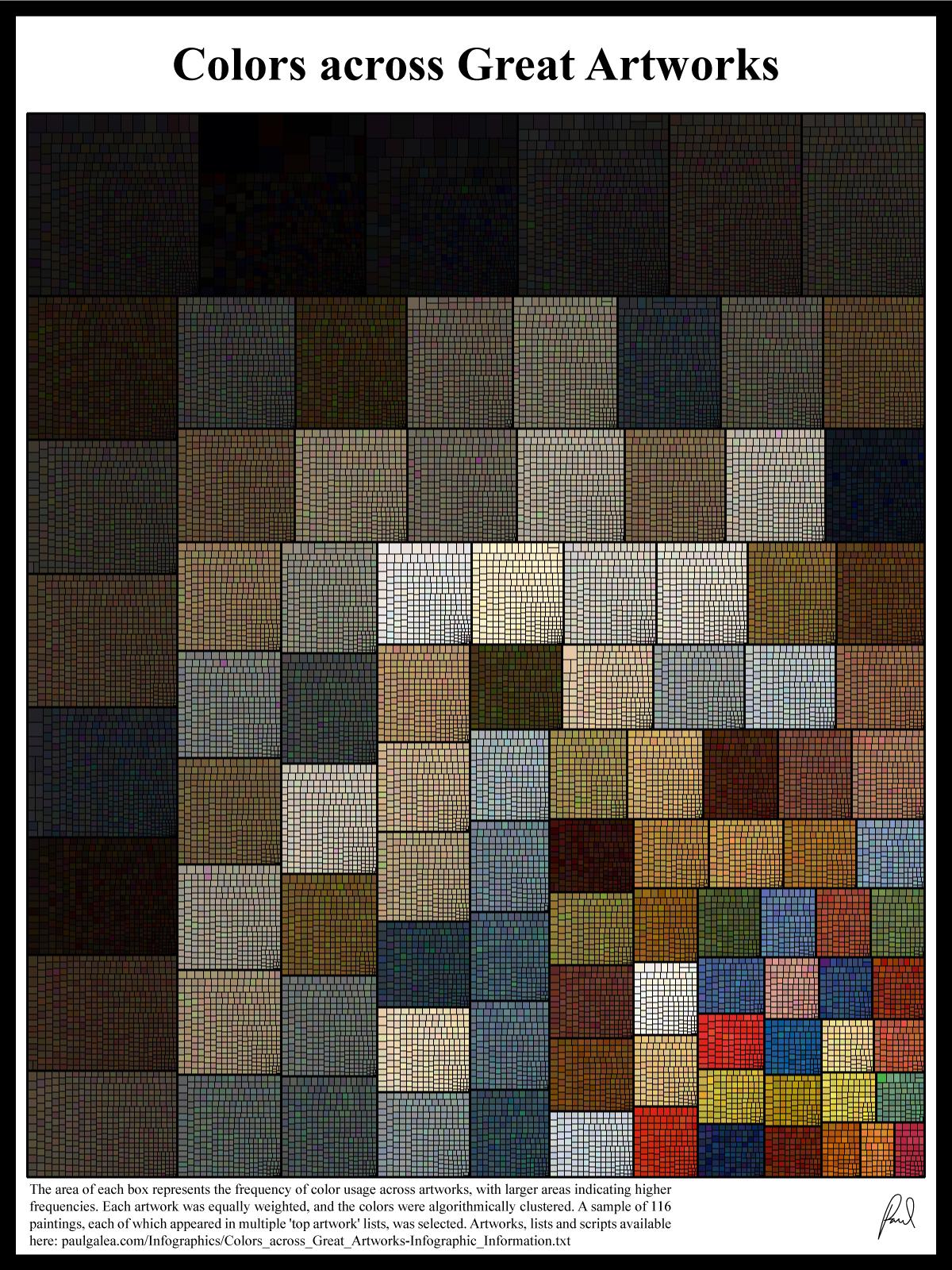this post was submitted on 09 Aug 2024
93 points (98.9% liked)
Data is Beautiful
852 readers
3 users here now
Be respectful
founded 5 months ago
MODERATORS
you are viewing a single comment's thread
view the rest of the comments
view the rest of the comments

I think that this can be explained by less important elements often taking a lot of space, but using muted colours, to direct the attention of the viewer to what matters in that work.
Gustav Klimt's "The Kiss" is a good example of that, because he uses it recursively:
The ochre background is less vivid than the foreground (flower field and couple), so you focus on the later. As you distinguish its elements, the field (in green, yellow, violet) kind of blurs together into a muted hue, in contrast with the vivid yellow of the couple. Then as you focus on the couple, the man "wears" dark rectangles, while the woman's dress has clusters of vivid blue and red, so you focus your attention on her.
Da Vinci's "The Last Supper" is also a good example.
It does use plenty vibrant reds, blues, and greens (a bit hard to see as the original colours faded away), but they're mostly for the clothes. The background takes a huge amount of space and it's highly unsaturated, except the windows and door (right behind Jesus, to give him further chromatic focus [and the bright-dark effect]).
Fun exception that proves the rule:
Van Gogh's painting might look like a violation of this general "less saturated = less important" principle, but it isn't - the name is "Starry Night" for a reason, the sky is the most important element here.
[Sorry for sperging out on this. I couldn't help - I got painters in my family, and they're often talking about this sort of stuff.]